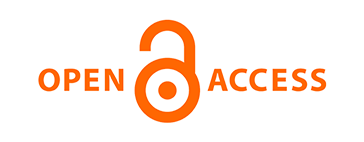Inhaled conditioned cell culture media: animal model for treatment of equine asthma
Contenido principal del artículo
Resumen
Asthma, a debilitating chronic inflammatory airway disorder, necessitates innovative therapeutic approaches. Equine spontaneous asthma (SEA) provides a unique, naturally occurring model, mirroring human asthma characteristics. SEA, linked to environmental factors, offers insights into inflammatory processes in equine medicine. This study explores the safety and efficacy of inhaled mesenchymal stem cell (MSC) supernatant as a treatment for SEA. Methods: Supernatants obtained from equine MSCs, primed with Toll-like Receptor ligands or immune-related factor, were developed as a new SEA treatment. First, we develop a safety protocol in mice. Second, horses diagnosed with SEA underwent bronchoalveolar lavage, and respiratory mechanics were treated with polarized and non-polarized MSC supernatants. Clinical and cellular responses were monitored. Results: Polarized equine MSC supernatant were obtained and used as treatment. Respiratory mechanics in mice showed no significant differences between control and treated groups. Safety trials in horses demonstrated good clinical responses and stability in cell counts post-treatment. Polarized MSC treatment showed diverse responses, with a notable decrease in neutrophils and clinical improvement after 10 days in some horses. Conclusions: Inhaled polarized-MSC supernatant presents a potential therapeutic avenue for SEA, although specific efficacy trials to support this hypothesis are needed. Moreover, the equine model provides translational insights, offering a bridge between rodent studies and human trials, emphasizing the potential of this approach in managing human asthma.
Detalles del artículo
Citas
Papi A, Brightling C, Pedersen SE, Reddel HK. Asthma. Lancet. 2018;391(10122):783-800. doi: 10.1016/S0140-6736(17)33311-1.
Lange-Consiglio A, Stucchi L, Zucca E, Lavoie JP, Cremonesi F, Ferrucci F. Insights into animal models for cell-based therapies in translational studies of lung diseases: Is the horse with naturally occurring asthma the right choice? Cytotherapy. 2019;21(5):525−534. doi: 10.1016/j.jcyt.2019.02.010.
Leclere M, Lavoie-Lamoureux A, Lavoie JP. Heaves, an asthma-like disease of horses. Respirology. 2011;16(7):1027−1046. doi: 10.1111/j.1440-1843.2011.02033.x.
Robinson NE. International workshop on equine chronic airway disease Michigan State University 16−18 June 2000. Equine Veterinary Journal. 2001;33(1):5−19. doi: 10.2746/042516401776767412.
Smith DE. IL-33: a tissue derived cytokine pathway involved in allergic inflammation and asthma. Clinical and Experimental Allergy. 2010;40(2):200−208. doi. 10.1111/j.1365-2222.2009.03384.x.
Schneberger D, Aharonson-Raz K, Singh B. Pulmonary intravascular macrophages and lung health: What are we missing? American Journal of Physiology - Lung Cellular and Molecular Physiology. 2012;302:L498−L508. doi: 10.1152/ajplung.00322.2011.
Couëtil LL, Cardwell JM, Gerber V, Lavoie JP, Léguillette R, Richard EA. Inflammatory airway disease of horses-Revised consensus statement. Journal of Veterinary Internal Medicine. 2016;30(2):503−515. doi: 10.1111/jvim.13824.
Pirie RS. Recurrent airway obstruction: A review. Equine Veterinary Journal. 2014;46(3):276−288. doi: 10.1111/evj.12204.
Fidalgo LE, Rejas J, Ruiz de Gopegui R, Ramos JJ. Patología médica veterinaria: libro de texto para la docencia de la asignatura. León:Universidad de León, Universidad de Santiago de Compostela, Universidad de Zaragoza; 2003. 616 p.
Dauvillier J, Felippe MJB, Lunn DP, Lavoie-Lamoureux A, Leclère M. Beauchamp G, et al. Effect of long-term fluticasone treatment on immune function in horses with heaves. Journal of Veterinary Internal Medicine. 2011;25(3):549−557. doi: 10.1111/j.1939-1676.2011.0717.x.
Calzetta L, Roncada P, Di Cave D, Bonizzi L, Urbani A. Pistocchini E, et al. Pharmacological treatments in asthma-affected horses: A pair-wise and network meta-analysis. Equine Veterinary Journal. 2017;49(6):710−717. doi: 10.1111/evj.12680.
Phinney DG, Pittenger MF. Concise review: MSC-derived exosomes for cell-free therapy. Stem Cells. 2017;35(4):851−858. doi: 10.1002/stem.2575.
Basak O, Taylor V. Stem cells of the adult mammalian brain and their niche. Cellular and Molecular Life Sciences. 2009;66:1057−1072. doi: 10.1007/s00018-008-8544-x.
Tan YX. Progress in chemokine-like factor 1 research over the past 10 years: From promoting inflammatory cell trafficking to inhibiting allergic airway inflammation. Journal of Allergy Therapy. 2012;S1:006. doi: 10.4172/2155-6121.s1-006.
Waterman RS, Tomchuck SL, Henkle SL, Betancourt AM. A new mesenchymal stem cell (MSC) paradigm: Polarization into a pro-inflammatory MSC1 or an immunosuppressive MSC2 phenotype. PLoS ONE. 2010;5(4):e10088. doi: 10.1371/journal.pone.0010088.
Michelotto PV, Lessa DAB, Silva KMD, Gawlowski KRS, Fernandes WR. The airway fluid analysis: methods and interpretation for the athletic horse. Revista Brasileira de Ciência Veterinária. 2013;20(1):1−5. doi: 10.4322/rbcv.2014.040.
Couëtil LL, Rosenthal FS, DeNicola DB, Chilcoat CD. Clinical signs, evaluation of bronchoalveolar lavage fluid, and assessment of pulmonary function in horses with inflammatory respiratory disease. American Journal of Veterinary Research. 2001;62(4):538−546. doi: 10.2460/ajvr.2001.62.538.
Cassano JM, Schnabel LV, Goodale MB, Fortier LA. The immunomodulatory function of equine MSCs is enhanced by priming through an inflammatory microenvironment or TLR3 ligand. Veterinary Immunology and Immunopathology. 2018;195:33−39. doi: 10.1016/j.vetimm.2017.10.003.
Hwang S, Sung DK, Kim YE, Yang M, Ahn SY, Sung SI, et al. Mesenchymal stromal cells primed by toll-like receptors 3 and 4 enhanced anti-inflammatory effects against LPS-induced macrophages via extracellular vesicles. International Journal of Molecular Sciences. 2023;24(22):16264. doi: 10.3390/ijms242216264.
Caffi V, Espinosa G, Gajardo G, Morales N, Durán MC, Uberti B, et al. Pre-conditioning of equine bone marrow-derived mesenchymal stromal cells increases their immunomodulatory capacity. Frontiers in Veterinary Science. 2020;7:318. doi: 10.3389/fvets.2020.00318.
Lange-Consiglio A, Romele P, Magatti M, Silini A, Idda A, Martino NA, et al. Priming with inflammatory cytokines is not a prerequisite to increase immune-suppressive effects and responsiveness of equine amniotic mesenchymal stromal cells. Stem Cell Research & Therapy. 2020;11(1):99. doi: 10.1186/s13287-020-01611-z.
Hodgson JL, Hodgson DR. Collection and analysis of respiratory tract samples. In: McGorum BC, Dixon PM, Robinson NE, Schumacher, editors. Equine Respiratory Medicine and Surgery. Elsevier; 2007. p. 119−150. doi: 10.1016/B978-0-7020-2759-8.50014-3.
License

Veterinaria México OA por Facultad de Medicina Veterinaria y Zootecnia de la Universidad Nacional Autónoma de México se distribuye bajo una Licencia Creative Commons Atribución 4.0 Internacional.
Basada en una obra en http://www.revistas.unam.mx
- Todos los artículos en Veterinaria México OA se publican bajo una licencia de Creative Commons Reconocimiento 4.0 Unported (CC-BY 4.0). Con esta licencia, los autores retienen el derecho de autor, pero permiten a cualquier usuario compartir, copiar, distribuir, transmitir, adaptar y hacer uso comercial de la obra sin necesidad de proporcionar un permiso adicional, siempre y cuando se otorgue el debido reconocimiento al autor o fuente original.
- Al utilizar esta licencia, los artículos en Veterinaria México OA cubren o exceden todos los requisitos fundacionales e institucionales para ser considerados de Acceso Abierto.
- Los autores no pueden utilizar material protegido por derechos de autor en su artículo a menos que ese material esté también disponible bajo una licencia igualmente generosa.



